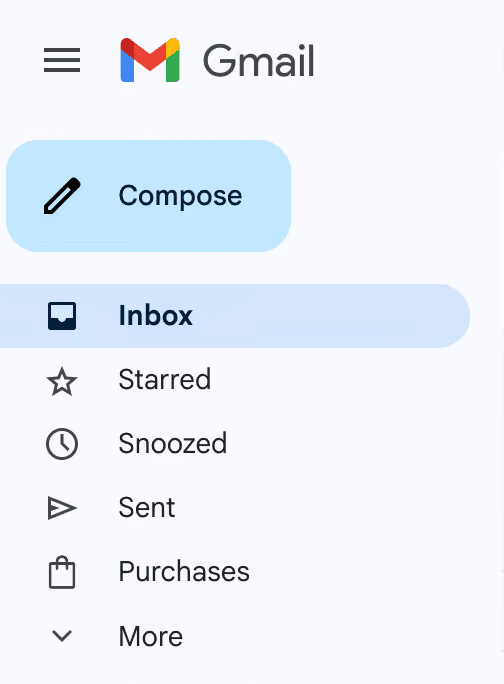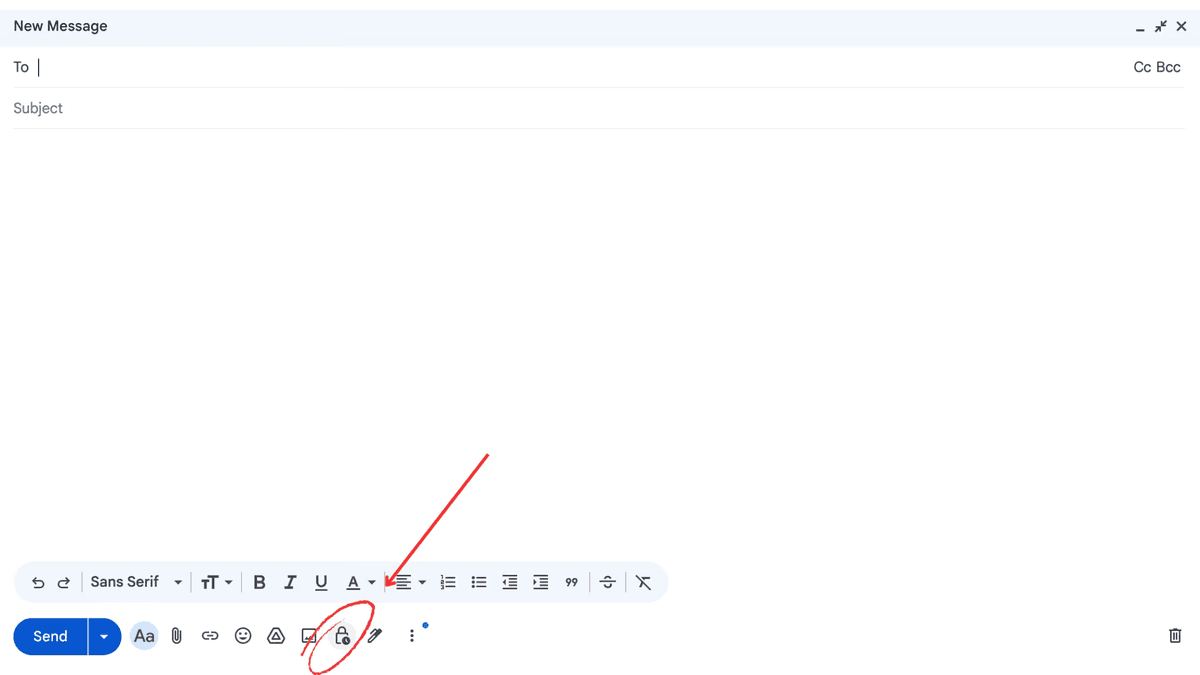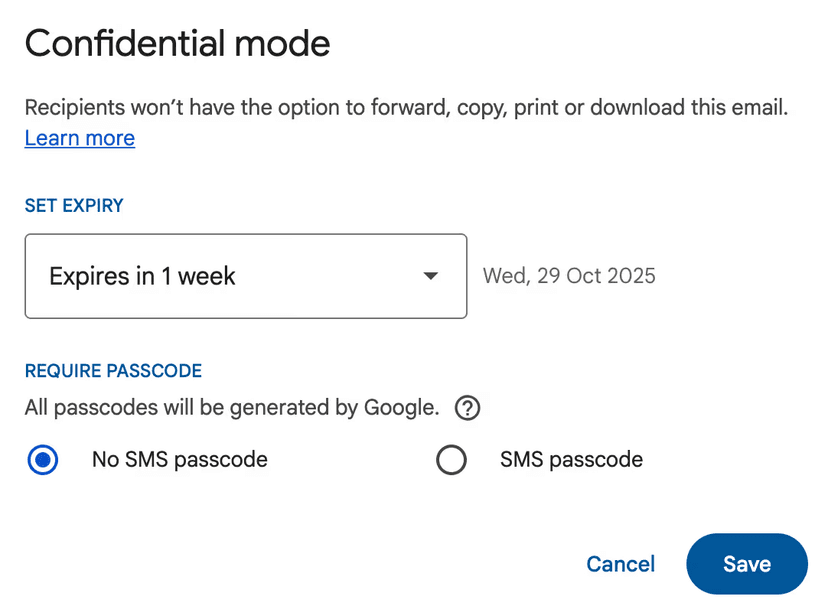CONTACT
© Fyxer AI Limited. Company number 15189973. All rights reserved.
Begin your day with emails neatly organized, replies crafted to match your tone and crisp notes from every meeting.
© Fyxer AI Limited. Company number 15189973. All rights reserved.
© Fyxer AI Limited. Company number 15189973. All rights reserved.
© Fyxer AI Limited. Company number 15189973. All rights reserved.
Email is one of the easiest ways to share information — and one of the easiest to intercept. Whether you’re sending a contract, a client proposal, or financial data, encryption helps keep your messages secure from unauthorized access.
Email encryption helps you take control of privacy by securing the messages and files you send every day. Whether you’re using Gmail, Outlook, or another platform, there are built-in tools and advanced settings that make it easier to protect sensitive information from falling into the wrong hands.
Email encryption secures the content of your messages so that only the intended recipient can read them. It converts readable data into scrambled code that can’t be deciphered without the correct key.
There are two main types of encryption you’ll come across:
For business users, advanced encryption methods like S/MIME (Secure/Multipurpose Internet Mail Extensions) or PGP (Pretty Good Privacy) offer additional protection. These rely on digital certificates or encryption keys that verify both identity and message authenticity.
In short, encryption adds a layer of security that keeps sensitive data private — whether you’re communicating internally or sending confidential information to a client.
Gmail automatically uses TLS encryption whenever possible. That means most emails you send are already protected during transmission. However, for sensitive or confidential content, you can add extra layers of control through Gmail’s Confidential Mode.
Log into Gmail and click Compose to start a new message.

At the bottom of the email window, click the lock and clock icon. This activates Confidential Mode, which lets you control who can view, forward, copy, or download your message.

Choose how long the message will stay available — from one day to five years. You can also select SMS passcode to require a text verification before opening.

Click Save, then Send. The recipient will see instructions to verify their identity before they can open your email.
Confidential Mode doesn’t replace full encryption, but it’s an effective way to prevent accidental sharing and limit exposure of sensitive content.
Get the full breakdown: How to send encrypted files in Gmail
If your company uses Google Workspace, you can enable S/MIME for stronger encryption. S/MIME ensures that both sender and recipient identities are verified through digital certificates, offering end-to-end security.
Here’s how to enable S/MIME in Gmail:
S/MIME is ideal for teams dealing with financial data, legal information, or healthcare records where compliance and data protection are critical.
Microsoft Outlook provides multiple encryption options, from basic message protection to full enterprise-grade encryption. The feature you’ll use depends on your version of Outlook and your organization’s setup.
Once enabled, recipients using compatible services (like Outlook.com or Office 365) can read your encrypted email directly. Others will receive a secure link to view it through a protected Microsoft portal.
Outlook’s web version makes encryption simple:
Microsoft’s cloud encryption ensures your email stays protected both in transit and at rest.
Get the full breakdown: How to send encrypted emails in Outlook
S/MIME offers another level of protection for enterprise environments using Microsoft Exchange or 365.
Here’s how to set up S/MIME encryption in Outlook:
Both sender and recipient must have valid certificates and S/MIME enabled.
If your business requires consistent end-to-end encryption or handles sensitive data daily, consider a dedicated encrypted email provider such as Proton Mail, Tutanota, or StartMail. These services are built around privacy, storing data in secure jurisdictions and using open-source encryption methods.
For teams, platforms like PreVeil and Virtru integrate directly with Gmail or Outlook, combining enterprise-level encryption with easy sharing and access controls.
According to a 2020 study, using dedicated encrypted services can reduce the risk of phishing and man-in-the-middle attacks by minimizing third-party data exposure.
Encryption is a powerful safeguard, but it works best when combined with smart digital habits. If you handle business communications daily, these consistent security practices help maintain client trust and compliance:
Whether you use Gmail, Outlook, or another service, encrypting your emails is a straightforward way to protect your data and your reputation. As privacy expectations rise and regulations tighten, encryption will continue to be an essential part of secure communication.
Strong email security starts with good habits, but it’s even more effective when paired with the right tools. That’s where smart inbox management comes in — keeping your workflow efficient while maintaining privacy standards.
Fyxer keeps your inbox organized and your communications secure. From managing sensitive emails to handling follow-ups automatically, it helps you stay in control of what matters — without getting lost in admin.
In Gmail, you can click the lock icon in the message header to check the encryption level (standard or enhanced).
In Outlook, encrypted messages display a padlock symbol in your Sent folder or message window.
If you don’t see these indicators, check your settings to confirm that encryption is enabled before sending future emails.
Yes. When you send an encrypted message, attachments are encrypted automatically. For extra-sensitive files, you can use a password-protected ZIP folder or a secure file-sharing link. It’s also best practice to confirm that recipients understand how to access encrypted files safely, especially when sending across different platforms.
For S/MIME and PGP encryption, both parties must have compatible certificates or keys. Confidential Mode or Microsoft 365 encryption, however, works even if the recipient isn’t using encryption tools. This flexibility allows secure communication between users, even if one side isn’t using the same email provider.
Confidential Mode restricts sharing and adds access controls, but the content is not end-to-end encrypted. S/MIME provides full encryption and identity verification for higher security. If you handle sensitive data regularly, S/MIME is the more robust option for compliance and data protection.
No system is entirely immune to risk, but encryption drastically reduces the chance of interception or unauthorized access. It’s one of the strongest privacy tools available for digital communication. Combined with good password hygiene and two-factor authentication, encryption helps create a secure foundation for your everyday correspondence.